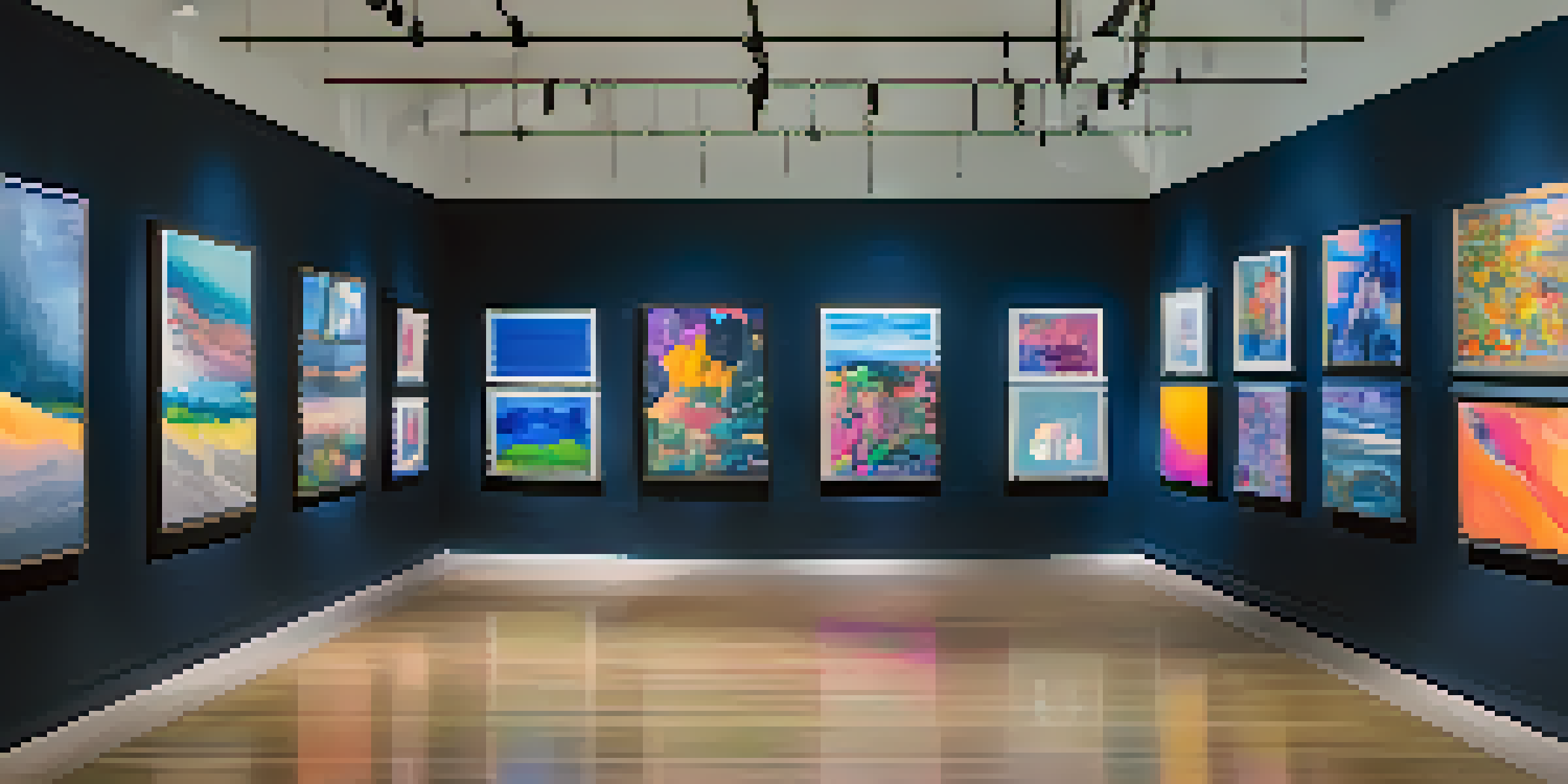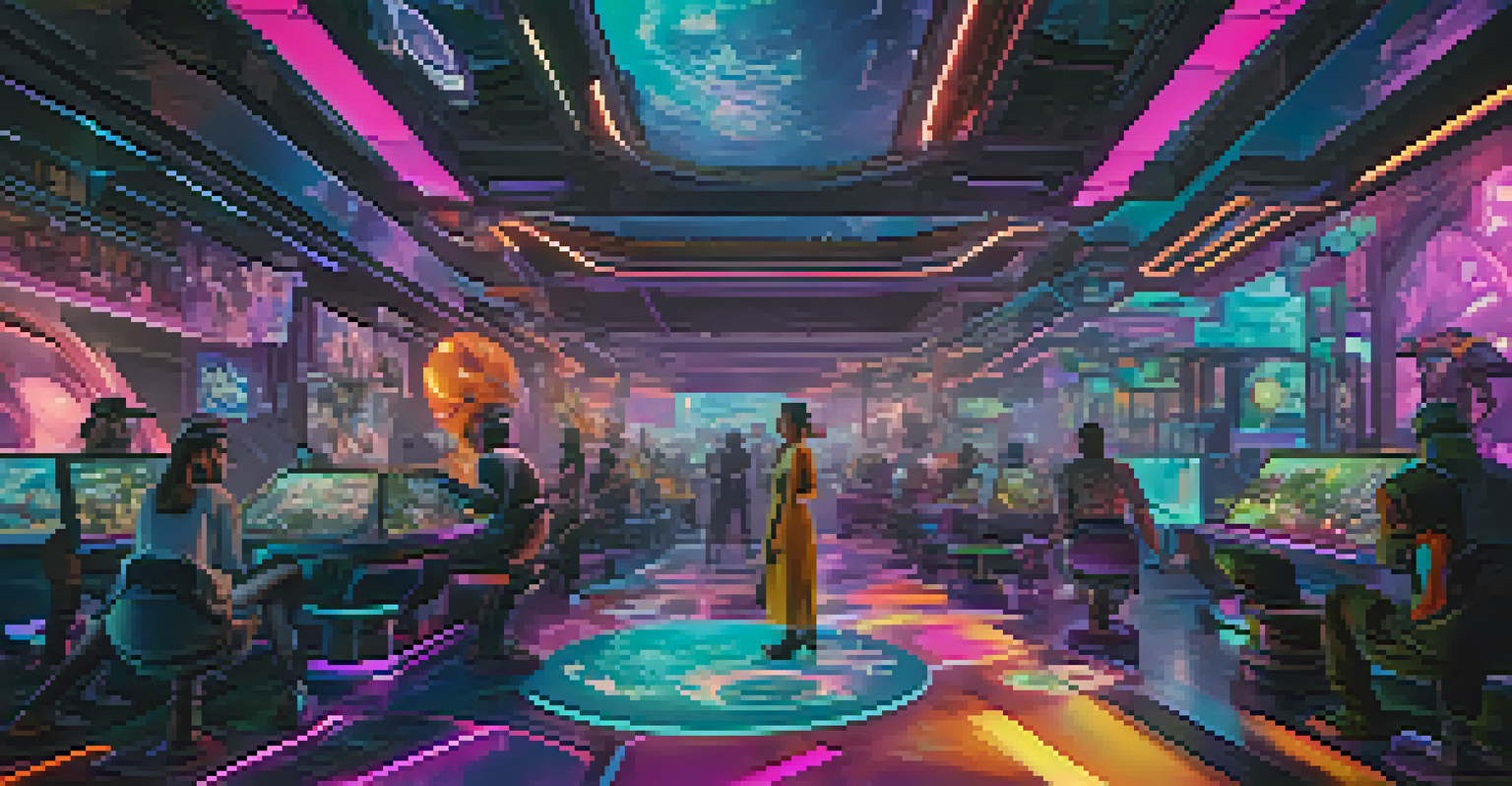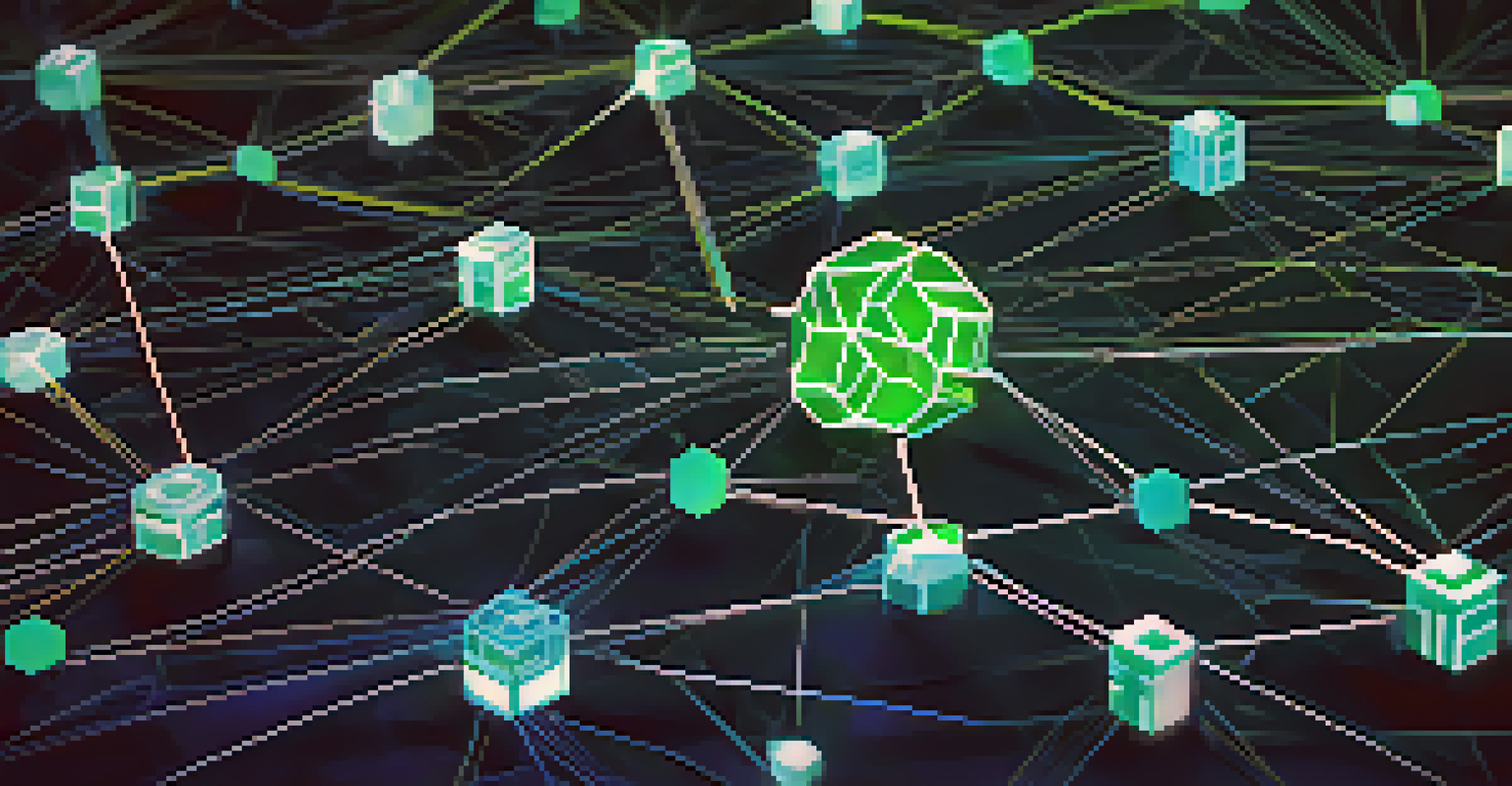Art vs. Gaming: Which NFT Sector is Dominating Sales?

Understanding NFTs: A Quick Overview
Non-fungible tokens (NFTs) have revolutionized the way we perceive ownership in the digital realm. Unlike traditional cryptocurrencies, NFTs are unique digital assets that represent ownership of a specific item, be it art, music, or virtual goods. This uniqueness is what makes them appealing to collectors and investors alike, driving significant attention in various sectors.
NFTs are not just a trend; they represent a fundamental shift in the way we think about ownership and value in the digital world.
As a digital certificate of authenticity, NFTs are secured on a blockchain, ensuring transparency and traceability. This technology has opened doors for artists and gamers to monetize their creations in ways that were not possible before. With the popularity of NFTs surging, understanding their impact on different industries is crucial.
In this article, we'll dive into the current NFT landscape, focusing on the competition between the art world and the gaming industry. By examining sales figures, market trends, and consumer interest, we aim to uncover which sector is currently leading the charge in NFT sales.
The Rise of NFTs in the Art World
The art industry has witnessed a remarkable transformation with the advent of NFTs. Artists can now sell their work directly to collectors without the need for intermediaries, such as galleries or auction houses. This direct-to-consumer model not only empowers artists but also fosters a global marketplace for unique digital art pieces.

High-profile sales, such as Beeple's $69 million digital collage, have captured the public's imagination and highlighted the potential of NFTs in art. These monumental sales have not only brought serious money into the sector but have also attracted artists from various backgrounds—making the NFT art space incredibly diverse and vibrant.
NFTs Transform Digital Ownership
Non-fungible tokens (NFTs) provide unique digital ownership, revolutionizing how artists and gamers monetize their creations.
Furthermore, NFTs allow for innovative possibilities, such as programmable art that changes over time or art that can be interacted with. This creativity keeps collectors engaged and continually looking for the next big piece, ensuring that the art NFT market remains dynamic and thriving.
Gaming and NFTs: A Perfect Match?
Gaming has also embraced NFTs, seamlessly integrating them into gameplay and virtual economies. In-game assets like skins, weapons, and characters can now be tokenized, allowing players to own and trade these items as NFTs. This ownership gives players a sense of investment and attachment to their digital possessions, enhancing their gaming experience.
The future of gaming is not just about playing games but also about owning assets that you can trade, sell, or invest in.
Popular games like Axie Infinity have showcased the potential of NFTs in gaming, enabling players to earn money through gameplay. With a play-to-earn model, players can engage in battles and breed characters, turning their gaming passion into a viable income stream. This financial incentive has led to a surge in player interest and participation.
Moreover, the gaming industry draws in a massive audience, making it a lucrative sector for NFTs. As gaming continues to evolve and incorporate blockchain technology, the future of gaming NFTs appears promising, with new titles and innovative concepts regularly emerging.
Sales Data: Comparing Art and Gaming NFTs
When comparing sales data, the figures tell an intriguing story. Reports indicate that the NFT art market reached approximately $2.6 billion in sales in 2021, showcasing its rapid growth and appeal. Meanwhile, the gaming NFT market has also seen significant sales, particularly with titles like Axie Infinity generating over $1 billion in sales by the end of 2021.
Despite the impressive numbers in both sectors, gaming NFTs have a notable edge in terms of transaction volume and user engagement. The sheer number of players involved in trading and acquiring NFTs for in-game use often results in more frequent sales compared to the relatively smaller pool of art collectors.
Art vs Gaming: A Sales Showdown
While the NFT art market boasts high-value sales, the gaming sector leads in transaction volume and user engagement.
However, the art world continues to attract high-value sales, with a few standout pieces fetching multi-million dollar prices. This contrast highlights the different dynamics at play in each sector, with art focusing on exclusivity and high-value transactions, whereas gaming thrives on volume and accessibility.
Consumer Interests: What Drives Buyers?
Understanding consumer interests is key to analyzing the dominance of either sector. Art collectors often seek unique pieces that can appreciate over time, driven by a passion for aesthetics and cultural significance. This emotional connection to art can lead to significant investments, as collectors are willing to pay top dollar for pieces that resonate with them.
On the other hand, gamers are primarily motivated by utility and investment potential. The ability to use NFTs within a game or trade them for profit creates a different type of engagement. Gamers often prioritize functionality and gameplay experience, making them more likely to participate in NFT transactions that enhance their gaming adventures.
These differing motivations illustrate how both sectors attract distinct audiences. While art appeals to collectors who value uniqueness and culture, gaming draws in players looking for interactive experiences and potential financial gains. This divergence in consumer interests shapes the sales landscape for NFTs.
Challenges Facing the NFT Market
Despite the rapid growth of NFTs in both art and gaming, the market faces several challenges. One significant issue is the environmental impact associated with blockchain technology, particularly those that rely on energy-intensive proof-of-work systems. Artists and gamers alike are becoming increasingly aware of these concerns, prompting discussions about sustainable practices within the NFT space.
Additionally, the NFT market is still relatively new and can be volatile. Prices can fluctuate dramatically, leading to uncertainty for both creators and buyers. This volatility can deter potential investors who may be cautious about entering a market that seems unpredictable and risky.
Future Trends in NFTs
The NFT landscape is set to evolve with potential crossovers between art and gaming, eco-friendly solutions, and increased regulation.
Lastly, issues of copyright and ownership also pose challenges for the NFT community. As digital assets are created and sold, determining rightful ownership can become murky, leading to legal disputes. Addressing these challenges will be crucial for the long-term sustainability and growth of both the art and gaming NFT markets.
Future Trends: Where is the NFT Market Headed?
Looking ahead, the NFT landscape is expected to evolve significantly. As both art and gaming sectors continue to innovate, we may see a blending of the two, with artists creating NFTs specifically for gaming environments. This crossover could lead to new revenue streams and creative collaborations, benefiting both artists and gamers.
Moreover, the emergence of more eco-friendly blockchain solutions could alleviate environmental concerns, making NFTs more attractive to a broader audience. As sustainability becomes a priority, platforms that prioritize green technology may gain a competitive edge, drawing in conscientious buyers and creators.

Lastly, as mainstream adoption of NFTs increases, we can expect to see more regulatory frameworks put in place. These regulations will help clarify ownership rights and protect creators, ultimately establishing a more stable and trustworthy marketplace for both art and gaming NFTs.
Conclusion: The Battle Continues
In summary, both the art and gaming sectors have made significant strides in the NFT market, each offering unique advantages and attracting diverse audiences. While the art world captivates collectors with high-value sales and creativity, the gaming industry thrives on user engagement and volume, often leading in transaction numbers.
As we continue to explore the potential of NFTs, it’s clear that both sectors have much to offer. The competition between art and gaming is not merely a battle for dominance; it reflects the evolving nature of digital ownership and creativity in our increasingly online world.
Ultimately, the future of NFTs will likely involve collaboration and innovation across both sectors, paving the way for new opportunities and experiences for creators and collectors alike. The journey of NFTs is just beginning, and it will be exciting to see where it leads next.